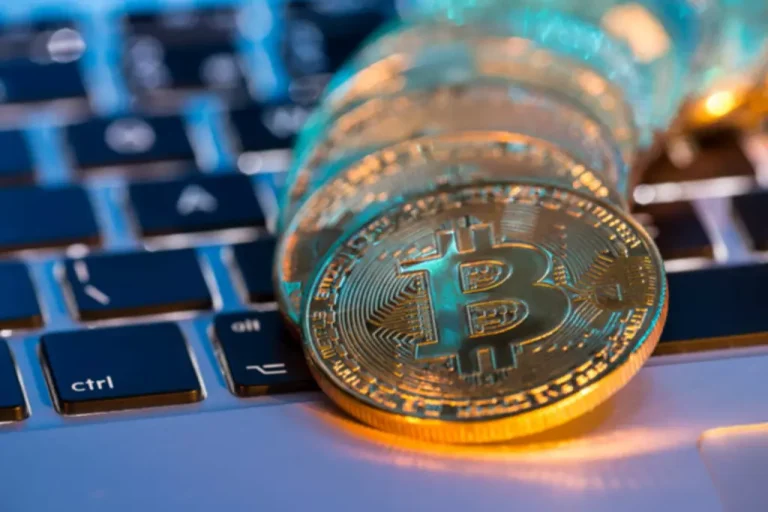The protocol depends heavily on atomic swaps, and a community of customers, liquidity suppliers, and aggregators. One idea many traders on lower liquidity buying and selling pairs face is recognized as slippage. Slippage is the distinction between the expected price and the actual value once the transacted exchange is completed, meaning worth could be misplaced for traders. Liminal isn’t liable for lack of funds, knowledge, or business disruptions arising out of person negligence or normal course of enterprise. Users must secure their belongings and acknowledge inherent dangers, corresponding to technical issues, evolving laws, third-party hacks and market volatility.
- To succeed, you’ll need wonderful bargaining skills and a strong sense of ethical character.
- In conclusion, decentralized exchanges, yield farming platforms, finance functions, and cross-chain liquidity pools have revolutionized the financial landscape.
- This is the essence of yield farming, with liquidity swimming pools as yield farms and liquidity suppliers as yield farmers.
- As the DeFi ecosystem expands, these innovations will proceed to drive the democratization of finance and foster new opportunities for customers worldwide.
- An AMM (automated market maker) is a type of decentralized trade protocol that uses a selected algorithm to price tokens.
- Now, your funds are locked into the liquidity pool for a specified time, and different merchants can tap into them, either for cryptocurrency buying and selling between token pairs or borrowing.
One of crucial metrics for liquidity swimming pools is Total Value Locked (TVL), which refers to the whole amount of belongings locked in a contract. By actively contributing to Liquidity Pools, people turn into stakeholders in the ecosystem, aligning their interests with the platform’s success. This symbiotic relationship cultivates a vibrant neighborhood, propelling innovation and driving the general development of the decentralized finance panorama.
Dangers Associated To Good Contracts
Without available liquidity, it’s a lot harder to buy and sell assets, with probably either side seeing unfavorable worth situations primarily based on demand. When you’re ready to withdraw your assets, your liquidity tokens are burned (or destroyed), and in return, you receive a portion of the liquidity pool’s property based in your share. Liquidity swimming pools exchange this order book with a simple mathematical method that automatically determines the value based on the ratio of belongings within the pool. This eliminates the need for conventional market makers and allows for efficient buying and selling even with relatively low trading volumes.

While within the pools, the worth of the liquidity is maintained by algorithms based on the supply and demand created via trading activity. These algorithms, referred to as the Automated Market Makers (AMMs), automate processes like liquidity provision and the dedication of token costs https://www.xcritical.com/. Thus, liquidity swimming pools can exchange centralized order books and the order books carried out on-chain — which are costly and cumbersome to function on crowded networks. A liquidity pool is typically created for a particular buying and selling pair (e.g., ETH/DAI or any ERC-20 token pair).
Developer Control And Protocol Dangers
Harnessing the power of convex monetary strategies maximizes yields for liquidity suppliers. With its user-friendly interface and superior automation, Convexity simplifies the method of earning engaging returns on digital property. Curve Finance is a liquidity protocol built on Ethereum that optimizes stablecoin buying and selling. By leveraging automated market makers (AMMs) and low slippage, Curve provides environment friendly and cost-effective swapping of stablecoins with minimal impermanent Loss.

Moreover, liquidity swimming pools have opened up new avenues for individuals to generate passive income. Users can earn charges and rewards proportional to their contributions by depositing their assets into these pools. This incentive mechanism not only encourages customers to participate but additionally aligns their pursuits with the growth and success of the protocols. This symbiotic relationship between users and DeFi platforms has created a self-sustaining ecosystem that continues to expand.
This ensures that the entire value of each tokens stays equal to $1 million. Once chosen, tokens are deposited in the pool, guaranteeing sufficient liquidity. The preliminary deposit amount should stability attracting merchants and sustaining stability. Some hardware wallets additionally supply straightforward how does liquidity work in crypto DeFi integration Users of the KeepKey hardware pockets can also use the ShapeShift platform to work together with DeFi protocols directly from their pockets. A blockchain analytics software known as Nansen discovered that 42% of yield farmers who contribute liquidity to a pool on launch day leave the pool inside a day.
Non-custodial Wallets: One Of The Only Ways To Hodl Cryptocurrency
A liquidity pool helps to take care of liquidity on a community by rewarding users who contribute belongings to the pool. These customers obtain liquid pool tokens as a reward, that are a portion of the fees from trades that happen inside the pool. There are various makes use of for these tokens on a DeFi community, such as exchanges or other smart contracts. Common DeFi exchanges that use these tokens on the Ethereum network (ERC-2) are Uniswap and SushiSwap, whereas PancakeSwap uses BEP-20 tokens on the BNB Chain. THORChain is a decentralized exchange that has 8 supported blockchains, together with Bitcoin.

Keep the product of the 2 token portions fixed and modify the pricing when trades cause the ratio to alter. Given that central banks have pressured commercial banks to set unfavorable rates of interest across Europe, it’s no marvel that DeFi protocols have experienced such explosive progress in under two years. Read the article to discover how DEXTools may help you manage, monitor, and swap your tokens in one intuitive interface.
Effective algorithms and sensible contracts allocate charges proportionally, considering elements like liquidity contribution and period. Such mechanisms promote transparency, entice participants, and foster a wholesome buying and selling surroundings. Simply said, it denotes the ability to transform investment into cash rapidly and at an affordable value.
As the DeFi ecosystem expands, these innovations will proceed to drive the democratization of finance and foster new opportunities for customers worldwide. Kyber Network Protocol is a leading liquidity protocol renowned for its effectivity and versatility. It empowers decentralized finance (DeFi) ecosystems by enabling seamless token swaps and enhancing liquidity across numerous blockchain networks.
DeFi is an idea that mixes each liquidity swimming pools and liquidity providers, making it potential for anyone to become a digital bank. Users deposit and lend funds to be able to produce higher Average Percentage Yields (APYs) than historically out there through banks. There are actually lots of of DeFi protocols reproducing all of the functions of a bank on a blockchain. Liquidity pools are the spine of many decentralized exchanges (DEXs), representing a paradigm shift in how trades are made and orders are filled. At their core, they’re blockchain good contracts that lock up funds, making a pool of tokens that users can trade against.
First, a sensible contract is written, defining pool functionalities like token swapping and costs. Token pairs are then selected based on market demand, trading quantity, and compatibility. A typical liquidity pool encourages and compensates its members for depositing digital belongings within the pool. Rewards could take the type of cryptocurrency or a portion of the buying and selling commissions paid by the exchanges the place they pool their assets. Stackswap is a cross-chain DEX for swapping BTC, ETH, and USDC (ERC20) with Stacks-based tokens (SIPs).
Its distinctive design caters to the needs of DeFi customers, particularly these engaged in yield farming and stablecoin trading methods. Market volatility can lead to impermanent Loss, the place the value of belongings in a liquidity pool fluctuates compared to holding them outdoors. Additionally, sensible contract vulnerabilities, hacking dangers, and sudden changes in market conditions can expose liquidity suppliers to potential financial losses. A liquidity pool is a set of funds locked in a wise contract on a decentralized finance (DeFi) network.
To do this, they lock two tokens at equal value in a protocol for a certain time period. For their contribution, LPs earn buying and selling charges proportional to their share of their equipped liquidity or particular LP tokens. Its efficient order-matching engine and deep liquidity pools guarantee optimum buying and selling circumstances.
Cross-chain liquidity swimming pools like Thorchain are pivotal in fostering a more connected and efficient DeFi panorama. Decentralized finance (DeFi) has gained significant traction lately, revolutionizing the standard monetary landscape. If we head over to Uniswap Liquidity Pools and record the rating by trading quantity, we’d get a predictable outcome. The hottest liquidity pools include token pairs involving stablecoins and ETH, Ethereum’s native coin (and the second-largest cryptocurrency).
Crypto liquidity swimming pools work to make cryptocurrency easier to show around in transactions and improve their overall efficacy and utility. Furthermore, one should be cautious of impermanent loss, a potential byproduct of offering liquidity to a LP pool and having one of the tokens go up in value. In this case, you could get less of the dear token (although the identical money value as you initially deposited), introducing extra threat. To absolutely understand what a liquidity pool is, we should be clear about the significance of liquidity itself.



